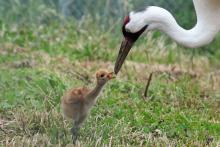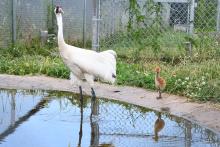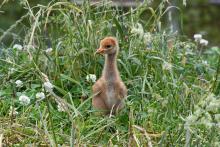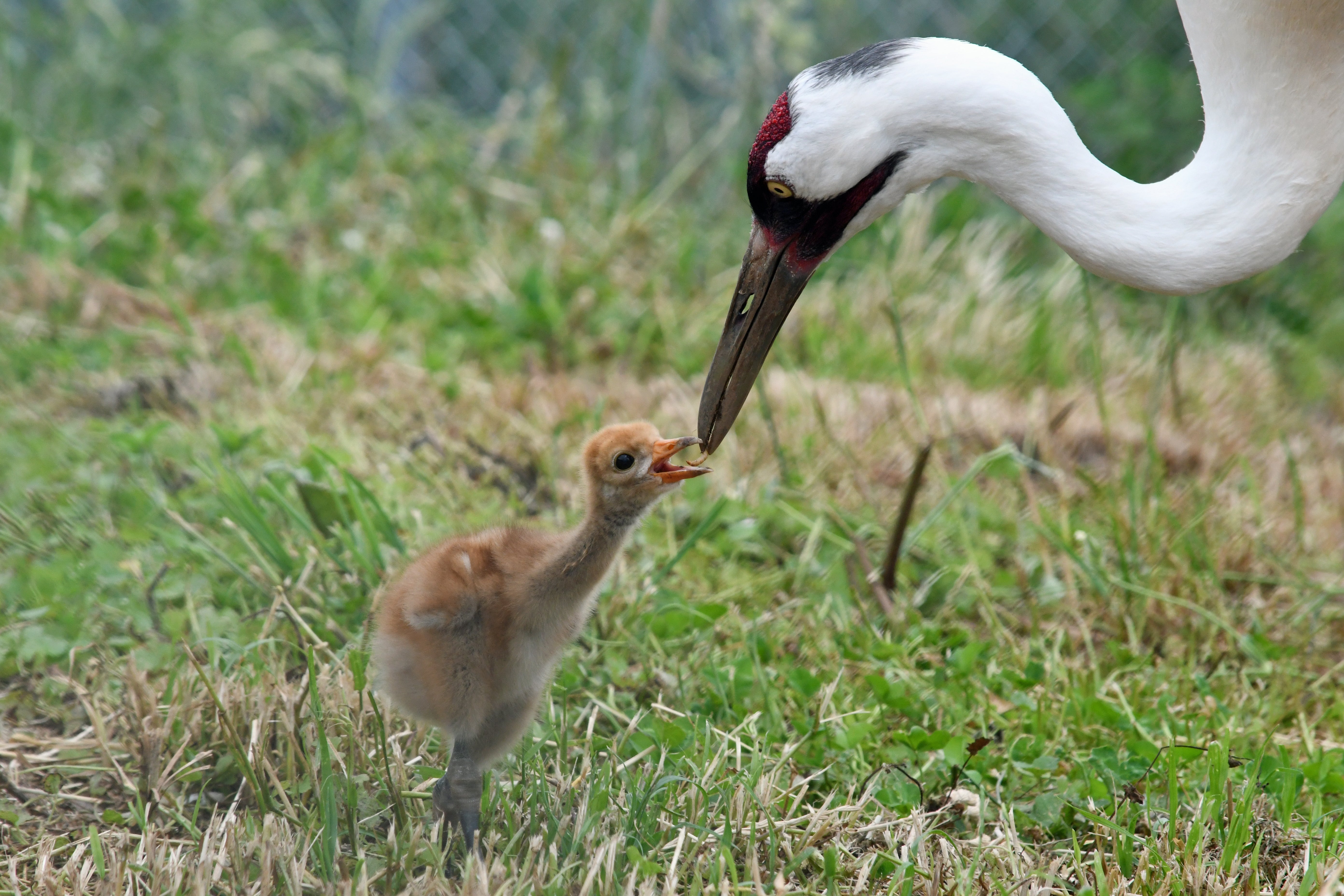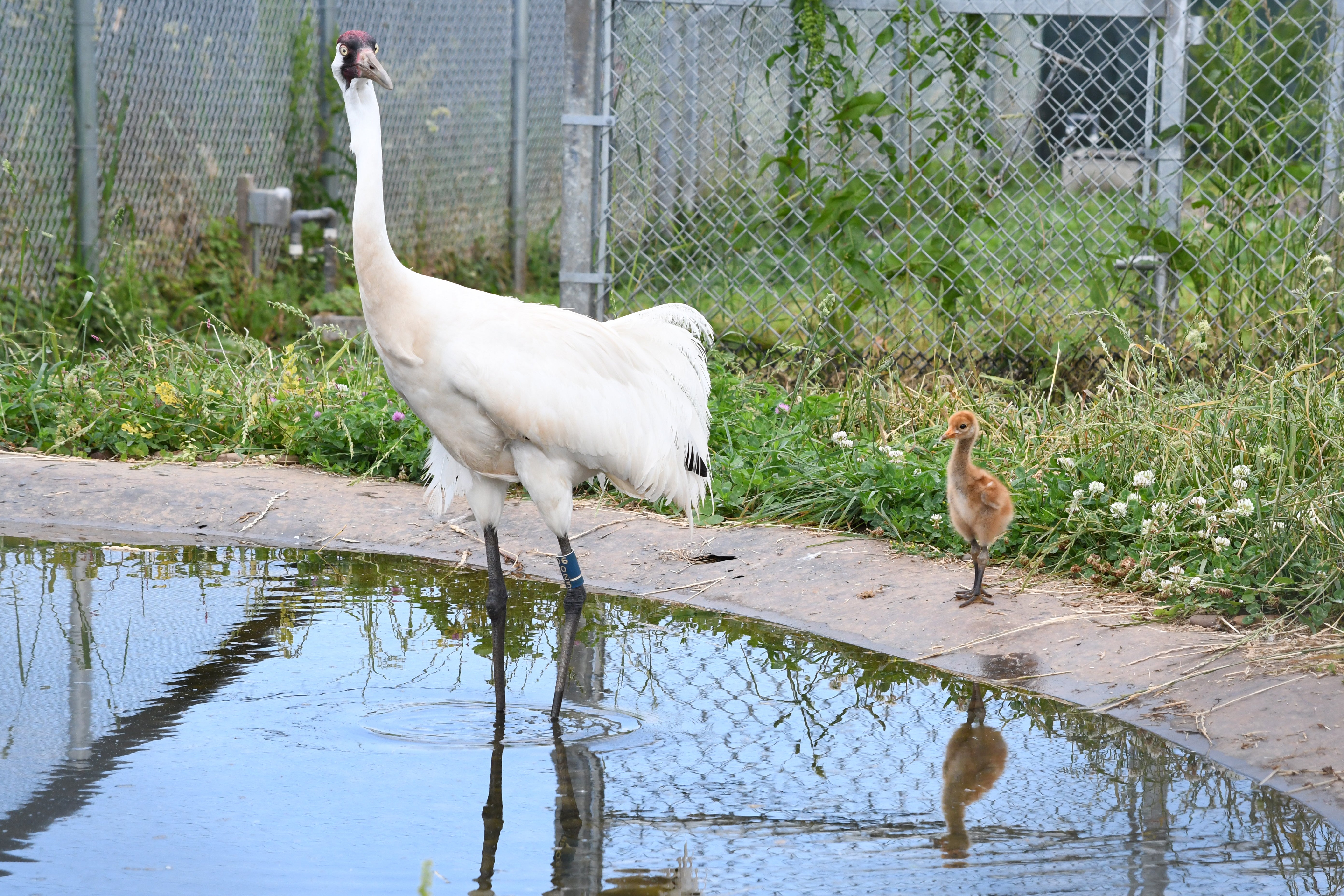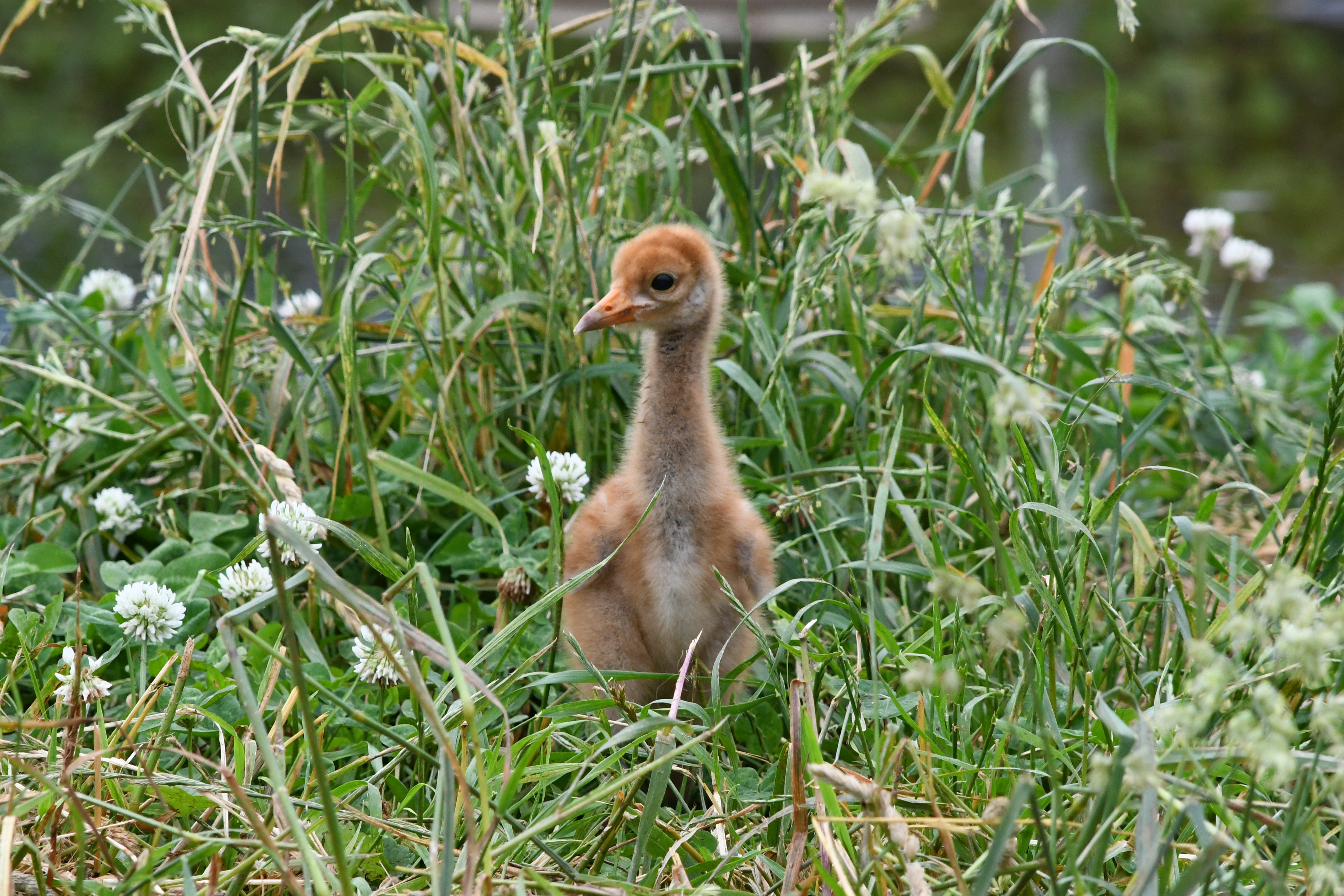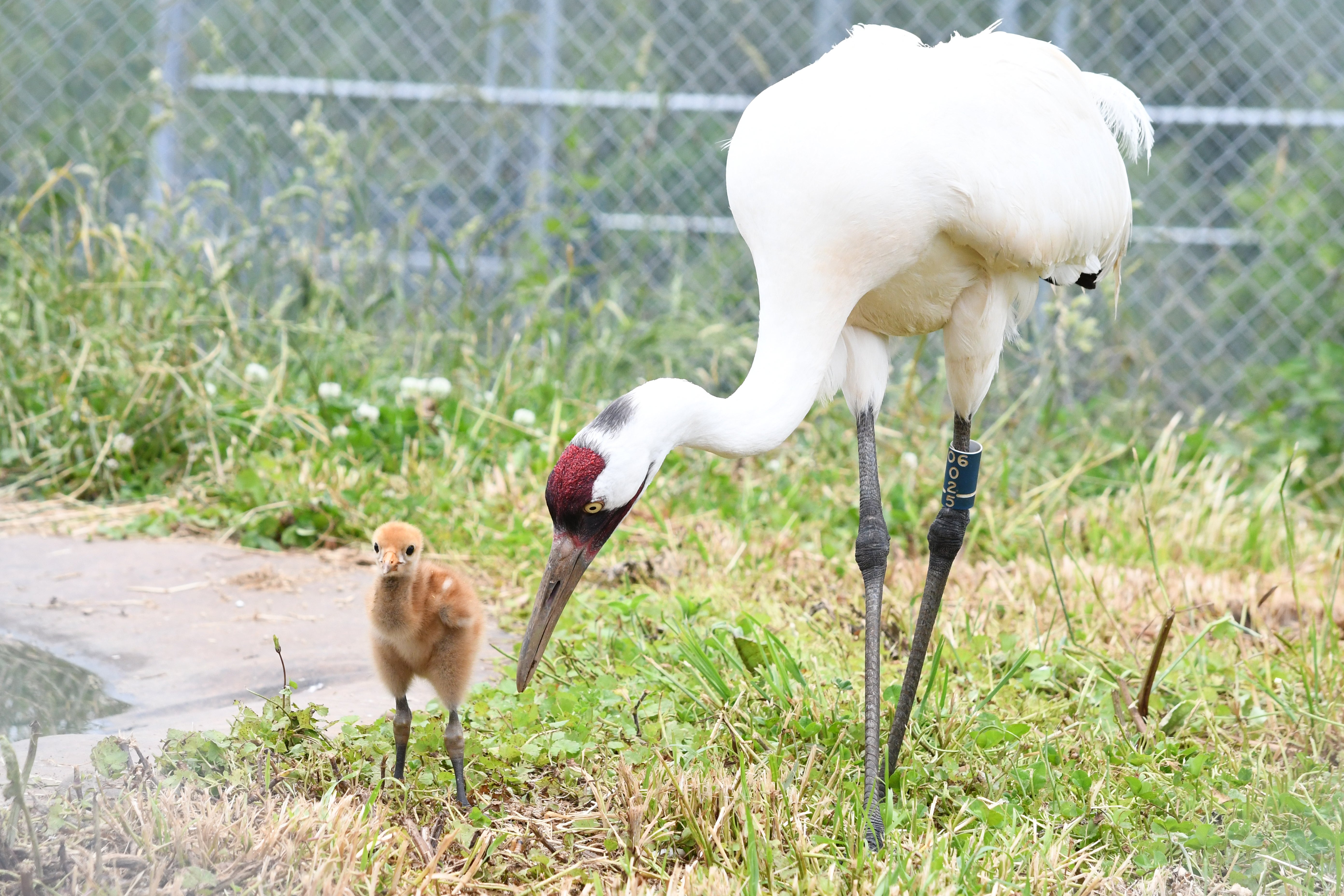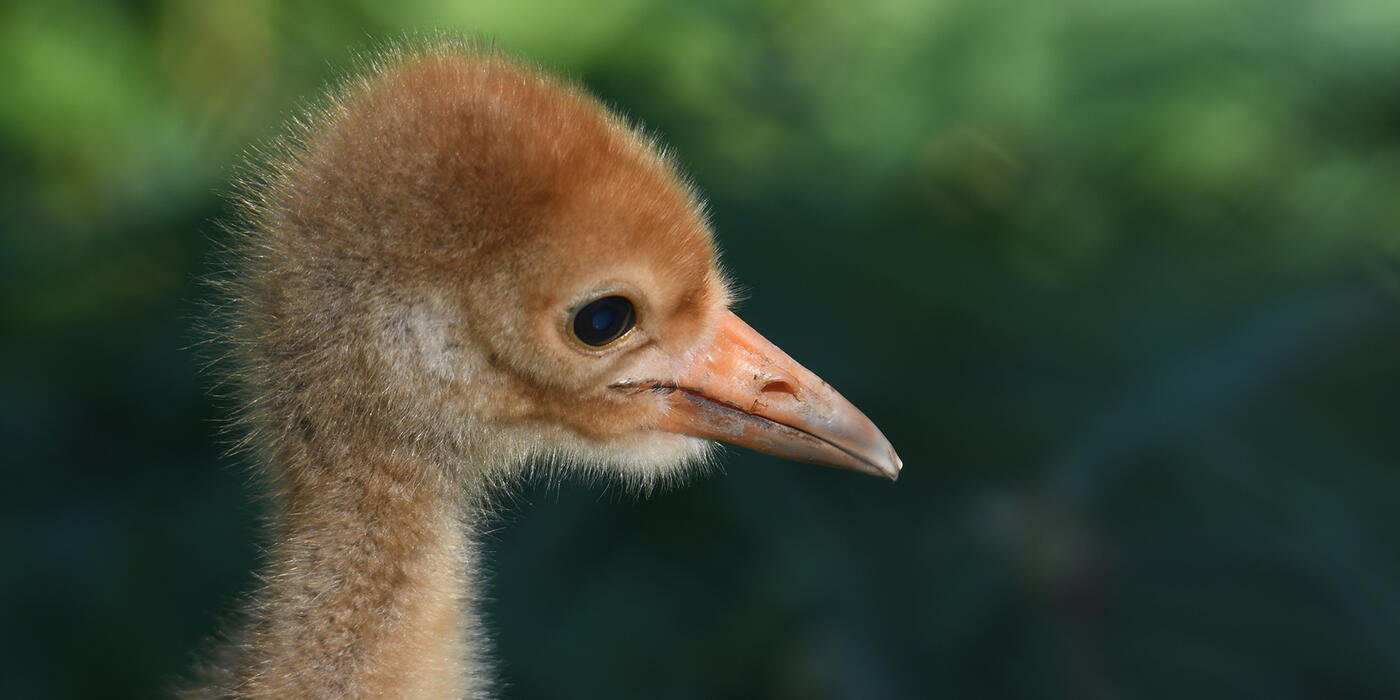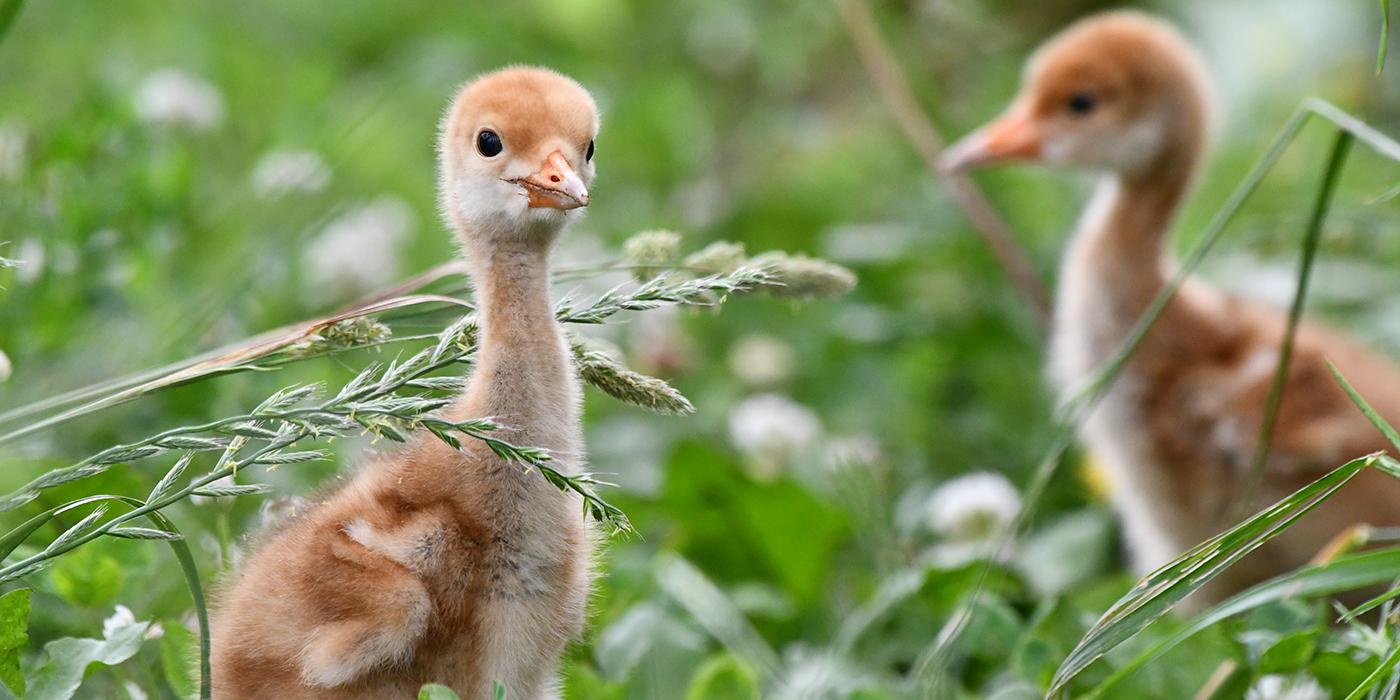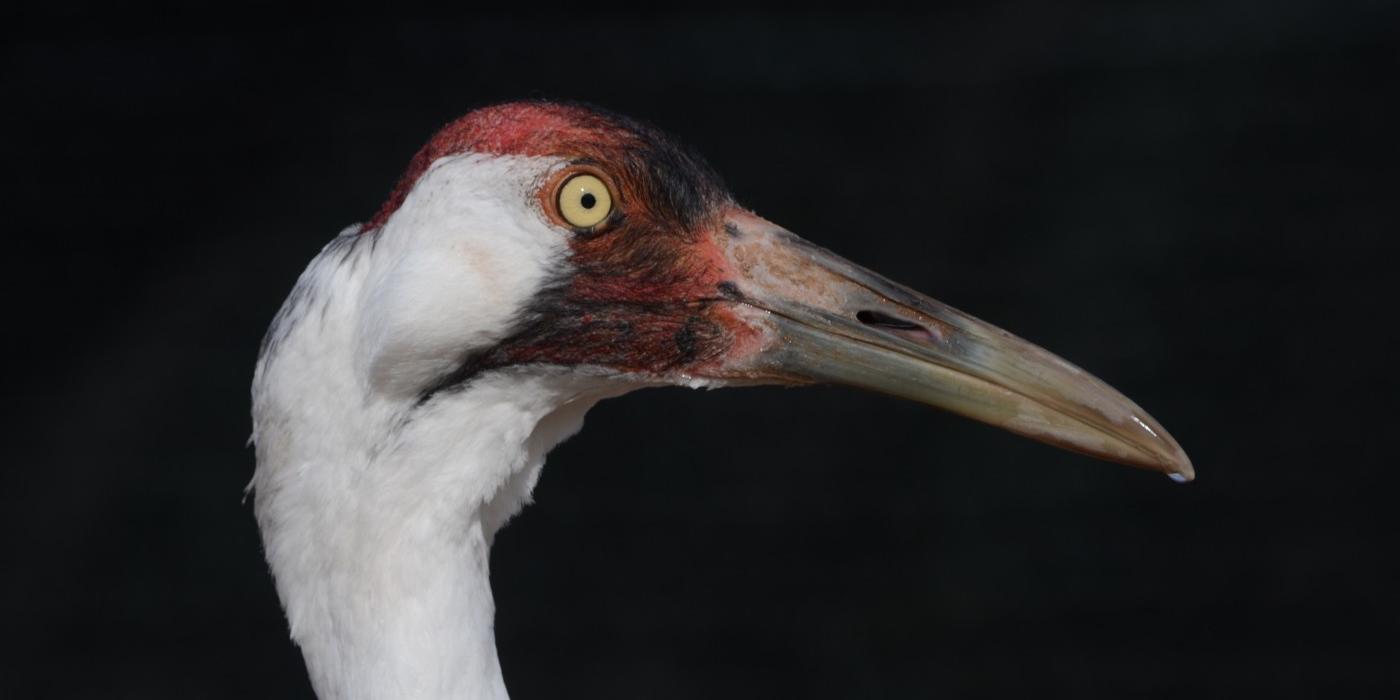First Whooping Crane Hatches at Smithsonian Conservation Biology Institute
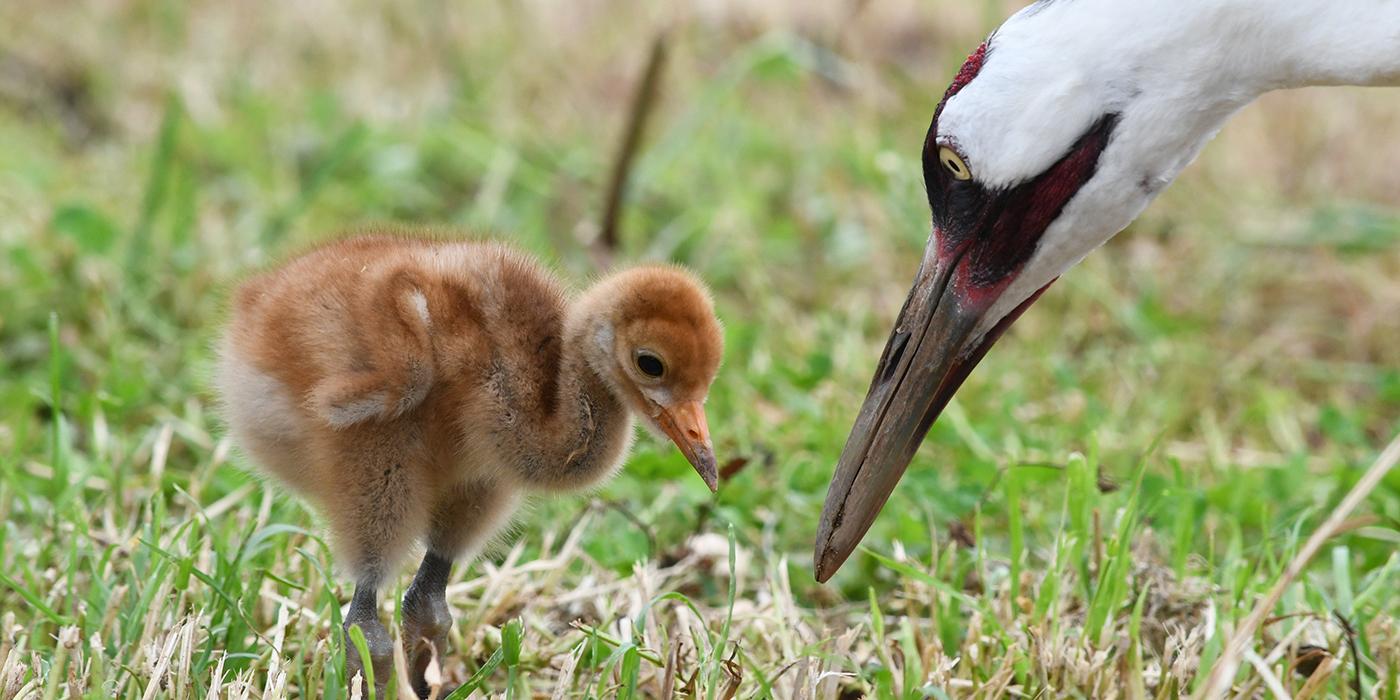
For the first time, a whooping crane—one of the most endangered species of crane in the world —hatched May 26 at the Smithsonian Conservation Biology Institute (SCBI) in Front Royal, Virginia, and is thriving. SCBI’s bird team took the then-egg under their wing May 18, after the International Crane Foundation and Necedah National Wildlife Refuge staff in Wisconsin found the egg abandoned in a wild nest. A 16-year-old female named Tehya and a 25-year-old male named Goliath were selected to serve as surrogate parents. The bird team is encouraged by the colt’s growth and report that the adults are protective and attentive to its needs.
Tehya arrived at SCBI in 2018 from the Patuxent Wildlife Research Center in Laurel, Maryland. Goliath arrived three years later, in 2021, from the Audubon Zoo in New Orleans. Both had successfully raised colts with previous mates at their former facilities. This year, the pair bred and produced two eggs of their own. Unfortunately, both were infertile. As part of the Whooping Crane Reintroduction Partnership, the Association of Zoos and Aquariums’ Species Survival Plan (SSP) for Whooping Cranes selected Tehya and Goliath as the surrogate parents because the wild egg was laid around the same time as the pair’s infertile eggs, so the incubation period aligned. While keepers awaited the arrival of the wild egg, they discarded the infertile eggs and provided Tehya and Goliath with a fake egg so they could continue to practice their natural parenting behaviors.
Whooping cranes breed in the spring, and eggs hatch approximately 30 to 35 days after they are laid. Both parents take turns incubating eggs. Just prior to hatch, keepers switched Tehya and Goliath’s fake egg for the fertile one. When the colt hatched, both parents immediately began caring for it. Keepers and veterinarians are allowing the family to bond without interference. Staff continue to closely monitor the colt and report that it appears healthy, alert and curious about its surroundings. The colt will receive its first veterinary exam at 5 weeks old, and staff will take a DNA sample to confirm its sex.
Whooping crane colts fledge when they are between 80 and 100 days old, but they will stay near their parents’ territories for up to nine months. Whooping cranes hatched at SCBI’s breeding facility are considered candidates for reintroduction by the Whooping Crane SSP.
At SCBI’s Whooping Crane Breeding Facility, scientists study factors impacting egg laying success in female whooping cranes through monitoring hormones from fecal samples and establishing the relationship among hormone, courtship displays and housing environment. SCBI scientists also have worked with the Whooping Crane SSP to develop effective methods to cryopreserve (freeze) whooping crane semen, which could be used to increase genetic diversity in the population. The Whooping Crane Breeding Facility and research program were made possible by the Volgenau Foundation and an anonymous donor.
Habitat destruction, hunting, poaching, climate change, natural disasters and oil spills have contributed to the decline of whooping cranes. In 1941, approximately only 22 whooping cranes remained in the wild. Today, approximately 700 whooping cranes live in the wild and 140 live in human care.
# # #
Related Species:
Image Gallery
